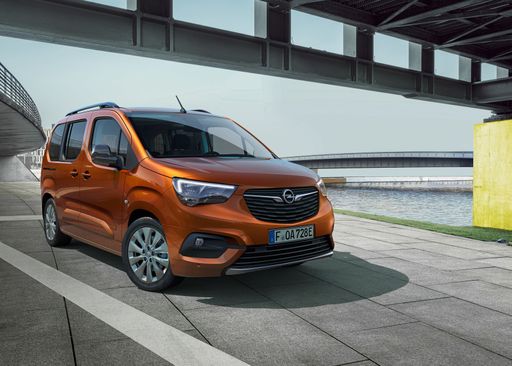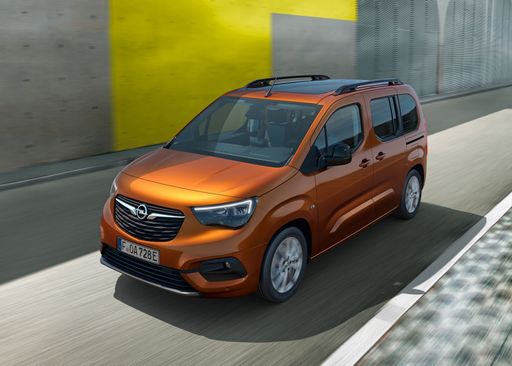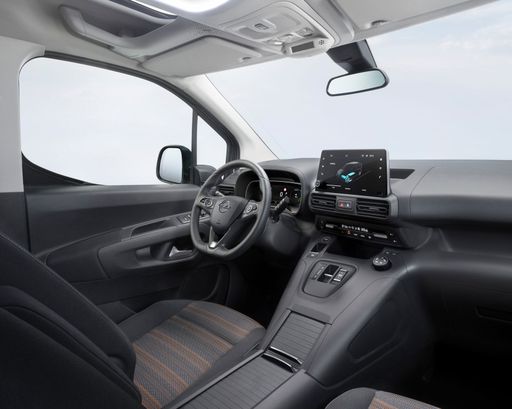Vauxhall Combo vs Renault Trafic Transporter – Which one offers the better deal?
Two cars, one duel: Vauxhall Combo meets Renault Trafic Transporter.
Which one wins in performance, efficiency and value for money? Find out now!
Here’s where it gets real: The technical differences in detail
Costs and Efficiency: When it comes to price and running costs, the biggest differences usually appear. This is often where you see which car fits your budget better in the long run.
Vauxhall Combo has a evident advantage in terms of price – it starts at 24800 £, while the Renault Trafic Transporter costs 33200 £. That’s a price difference of around 8353 £.
Fuel consumption also shows a difference: the Vauxhall Combo manages with 5.50 L and is therefore somewhat more efficient than the Renault Trafic Transporter with 6.60 L. The difference is about 1.10 L per 100 km.
In terms of energy consumption, the advantage goes to the Vauxhall Combo: with 18.50 kWh per 100 km, it’s slightly more efficient than the Renault Trafic Transporter with 21.20 kWh. That’s a difference of about 2.70 kWh.
As for range, the Vauxhall Combo performs slight better – achieving up to 345 km, about 27 km more than the Renault Trafic Transporter.
Engine and Performance: Under the bonnet, it becomes clear which model is tuned for sportiness and which one takes the lead when you hit the accelerator.
When it comes to engine power, the Renault Trafic Transporter has a somewhat edge – offering 170 HP compared to 136 HP. That’s roughly 34 HP more horsepower.
In acceleration from 0 to 100 km/h, the Renault Trafic Transporter is slight quicker – completing the sprint in 10.80 s, while the Vauxhall Combo takes 11.30 s. That’s about 0.50 s faster.
In terms of top speed, the Vauxhall Combo performs barely noticeable better – reaching 184 km/h, while the Renault Trafic Transporter tops out at 180 km/h. The difference is around 4 km/h.
There’s also a difference in torque: the Renault Trafic Transporter pulls noticeable stronger with 380 Nm compared to 300 Nm. That’s about 80 Nm difference.
Space and Everyday Use: Beyond pure performance, interior space and usability matter most in daily life. This is where you see which car is more practical and versatile.
Seats: Vauxhall Combo offers slightly more seating capacity – 7 vs 6.
In curb weight, the Vauxhall Combo is distinct lighter – 1530 kg compared to 1848 kg. The difference is around 318 kg.
In maximum load capacity, the Renault Trafic Transporter performs significantly better – up to 8900 L, which is about 6207 L more than the Vauxhall Combo.
When it comes to payload, Renault Trafic Transporter evident takes the win – 1222 kg compared to 840 kg. That’s a difference of about 382 kg.
All in all, the Renault Trafic Transporter shows itself to be dominates this comparison and secures the title of DriveDuel Champion.
It impresses with the more balanced overall package and proves to be the more versatile companion for everyday use.
Vauxhall Combo
The Opel Combo high-roof estate car stands out for its impressive versatility, making it an ideal choice for both families and professionals. Its spacious interior and clever storage solutions ensure a comfortable ride and plenty of room for all your needs. With a focus on practicality and efficient design, the Combo seamlessly combines functionality with modern driving technology.
details @ media.stellantis.com
@ media.stellantis.com
 @ media.stellantis.com
@ media.stellantis.com
 @ media.stellantis.com
@ media.stellantis.com
 @ media.stellantis.com
@ media.stellantis.com
Renault Trafic Transporter
The Renault Trafic Transporter is a versatile vehicle known for its spacious interior and functional design, ideal for both business and personal use. Its stylish exterior combined with practical features offers a perfect balance between form and function, making it a popular choice among van enthusiasts. The driving experience is enhanced by its smooth handling and advanced technology, providing comfort and convenience for any journey.
details

|
|
|
|
|
Costs and Consumption |
|
|---|---|
|
Price
24800 - 36500 £
|
Price
33200 - 52500 £
|
|
Consumption L/100km
5.5 - 5.9 L
|
Consumption L/100km
6.6 - 7.8 L
|
|
Consumption kWh/100km
18.5 - 18.8 kWh
|
Consumption kWh/100km
21.2 - 22.2 kWh
|
|
Electric Range
333 - 345 km
|
Electric Range
240 - 318 km
|
|
Battery Capacity
-
|
Battery Capacity
-
|
|
co2
0 - 155 g/km
|
co2
0 - 206 g/km
|
|
Fuel tank capacity
53 L
|
Fuel tank capacity
80 L
|
Dimensions and Body |
|
|---|---|
|
Body Type
High Roof Estate
|
Body Type
Cargo Van
|
|
Seats
5 - 7
|
Seats
3 - 6
|
|
Doors
4 - 5
|
Doors
4
|
|
Curb weight
1530 - 1922 kg
|
Curb weight
1848 - 2075 kg
|
|
Trunk capacity
597 - 850 L
|
Trunk capacity
-
|
|
Length
4410 - 4760 mm
|
Length
5080 - 5480 mm
|
|
Width
1848 mm
|
Width
1956 mm
|
|
Height
1812 - 1818 mm
|
Height
1967 - 2509 mm
|
|
Max trunk capacity
2126 - 2693 L
|
Max trunk capacity
3300 - 8900 L
|
|
Payload
430 - 840 kg
|
Payload
848 - 1222 kg
|
Engine and Performance |
|
|---|---|
|
Engine Type
Electric, Diesel
|
Engine Type
Diesel, Electric
|
|
Transmission
Automatic, Manuel
|
Transmission
Manuel, Automatic
|
|
Transmission Detail
Reduction Gearbox, Manual Gearbox, Automatic Gearbox
|
Transmission Detail
Manual Gearbox, Reduction Gearbox, Automatic Gearbox
|
|
Drive Type
Front-Wheel Drive
|
Drive Type
Front-Wheel Drive
|
|
Power HP
102 - 136 HP
|
Power HP
110 - 170 HP
|
|
Acceleration 0-100km/h
11.30 s
|
Acceleration 0-100km/h
10.8 - 15.1 s
|
|
Max Speed
135 - 184 km/h
|
Max Speed
110 - 180 km/h
|
|
Torque
250 - 300 Nm
|
Torque
245 - 380 Nm
|
|
Number of Cylinders
4
|
Number of Cylinders
4
|
|
Power kW
75 - 100 kW
|
Power kW
81 - 125 kW
|
|
Engine capacity
1499 cm3
|
Engine capacity
1997 cm3
|
General |
|
|---|---|
|
Model Year
2024
|
Model Year
2022 - 2025
|
|
CO2 Efficiency Class
A, E
|
CO2 Efficiency Class
F, G, A
|
|
Brand
Vauxhall
|
Brand
Renault
|
What drive types are available for the Vauxhall Combo?
Available configurations include Front-Wheel Drive.
The prices and data displayed are estimates based on German list prices and may vary by country. This information is not legally binding.
